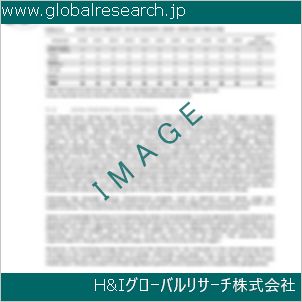1. Preface
1.1. Market Definition and Scope
1.2. Market Segmentation
1.3. Key Research Objectives
1.4. Research Highlights
2. Assumptions and Research Methodology
3. Executive Summary: Global Extracorporeal CO2 Removal Market
4. Market Overview
4.1. Introduction
4.1.1. Product Definition
4.1.2. Industry Evolution / Developments
4.2. Overview
4.3. Market Dynamics
4.3.1. Drivers
4.3.2. Restraints
4.3.3. Opportunities
4.4. Global Extracorporeal CO2 Removal Market Analysis and Forecast, 2017-2031
5. Key Insights
5.1. Pipeline Analysis
5.2. Key Product/Brand Analysis
5.3. Key Mergers & Acquisitions
5.4. COVID-19 Pandemic Impact on Industry
6. Global Extracorporeal CO2 Removal Market Analysis and Forecast, by Product
6.1. Introduction and Definitions
6.2. Key Findings/Developments
6.3. Market Value Forecast, by Product, 2017–2031
6.3.1. Extracorporeal CO2 Machines
6.3.2. Disposables
6.3.3. Gas Exchange Units
6.3.4. Access Cannulas
6.4. Market Attractiveness, by Product
7. Global Extracorporeal CO2 Removal Market Analysis and Forecast, by Application
7.1. Introduction and Definitions
7.2. Key Findings/Developments
7.3. Market Value Forecast, by Application, 2017–2031
7.3.1. Chronic Obstructive Pulmonary Disease (COPD)
7.3.2. Acute Respiratory Distress Syndrome (ARDS)
7.3.3. Bridge to Transplant
7.3.4. Others
7.3.5. 7.4 Market Attractiveness, by Application
8. Global Extracorporeal CO2 Removal Market Analysis and Forecast, by Access Type
8.1. Introduction and Definitions
8.2. Key Findings/Developments
8.3. Market Value Forecast, by Access Type, 2017–2031
8.3.1. Venovenous
8.3.2. Arteriovenous
8.4. Market Attractiveness, by Access Type
9. Global Extracorporeal CO2 Removal Market Analysis and Forecast, by End-user
9.1. Introduction and Definitions
9.2. Key Findings/Developments
9.3. Market Value Forecast, by End-user, 2017–2031
9.3.1. Hospital
9.3.2. Surgical Centers
9.3.3. Others
9.4. Market Attractiveness, by End-user
10. Global Extracorporeal CO2 Removal Market Analysis and Forecast, by Region
10.1. Key Findings
10.2. Market Value Forecast, by Region, 2017–2031
10.2.1. North America
10.2.2. Europe
10.2.3. Asia Pacific
10.2.4. Latin America
10.2.5. Middle East & Africa
10.3. Market Attractiveness, by Region
11. North America Extracorporeal CO2 Removal Market Analysis and Forecast
11.1. Introduction
11.1.1. Key Findings
11.2. Market Value Forecast, by Product, 2017–2031
11.2.1. Extracorporeal CO2 Machines
11.2.2. Disposables
11.2.3. Gas Exchange Units
11.2.4. Access Cannulas
11.3. Market Attractiveness, by Product
11.4. Market Value Forecast, by Application, 2017–2031
11.4.1. Chronic Obstructive Pulmonary Disease (COPD)
11.4.2. Acute Respiratory Distress Syndrome (ARDS)
11.4.3. Bridge to Transplant
11.4.4. Others
11.5. Market Attractiveness, by Application
11.6. Market Value Forecast, by Access Type, 2017–2031
11.6.1. Venovenous
11.6.2. Arteriovenous
11.7. Market Attractiveness, by Access Type
11.8. Market Value Forecast, by End-user, 2017–2031
11.8.1. Hospital
11.8.2. Surgical Centers
11.8.3. Others
11.9. Market Attractiveness, by End-user
11.10. Market Value Forecast, by Country/Sub-region, 2017–2031
11.10.1. U.S.
11.10.2. Canada
11.11. Market Attractiveness Analysis
11.11.1. By Product
11.11.2. By Application
11.11.3. By Access Type
11.11.4. By End-user
11.11.5. By Country
12. Europe Extracorporeal CO2 Removal Market Analysis and Forecast
12.1. Introduction
12.1.1. Key Findings
12.2. Market Value Forecast, by Product, 2017–2031
12.2.1. Extracorporeal CO2 Machines
12.2.2. Disposables
12.2.3. Gas Exchange Units
12.2.4. Access Cannulas
12.3. Market Attractiveness, by Product
12.4. Market Value Forecast, by Application, 2017–2031
12.4.1. Chronic Obstructive Pulmonary Disease (COPD)
12.4.2. Acute Respiratory Distress Syndrome (ARDS)
12.4.3. Bridge to Transplant
12.4.4. Others
12.5. Market Attractiveness, by Application
12.6. Market Value Forecast, by Access Type, 2017–2031
12.6.1. Venovenous
12.6.2. Arteriovenous
12.7. Market Attractiveness, by Access Type
12.8. Market Value Forecast, by End-user, 2017–2031
12.8.1. Hospital
12.8.2. Surgical Centers
12.8.3. Others
12.9. Market Attractiveness, by End-user
12.10. Market Value Forecast, by Country/Sub-region, 2017–2031
12.10.1. Germany
12.10.2. U.K.
12.10.3. France
12.10.4. Italy
12.10.5. Spain
12.10.6. Rest of Europe
12.11. Market Attractiveness Analysis
12.11.1. By Product
12.11.2. By Application
12.11.3. By Access Type
12.11.4. By End-user
12.11.5. By Country/Sub-region
13. Asia Pacific Extracorporeal CO2 Removal Market Analysis and Forecast
13.1. Introduction
13.1.1. Key Findings
13.2. Market Value Forecast, by Product, 2017–2031
13.2.1. Extracorporeal CO2 Machines
13.2.2. Disposables
13.2.3. Gas Exchange Units
13.2.4. Access Cannulas
13.3. Market Attractiveness, by Product
13.4. Market Value Forecast, by Application, 2017–2031
13.4.1. Chronic Obstructive Pulmonary Disease (COPD)
13.4.2. Acute Respiratory Distress Syndrome (ARDS)
13.4.3. Bridge to Transplant
13.4.4. Others
13.5. Market Attractiveness, by Application
13.6. Market Value Forecast, by Access Type, 2017–2031
13.6.1. Venovenous
13.6.2. Arteriovenous
13.7. Market Attractiveness, by Access Type
13.8. Market Value Forecast, by End-user, 2017–2031
13.8.1. Hospital
13.8.2. Surgical Centers
13.8.3. Others
13.9. Market Attractiveness, by End-user
13.10. Market Value Forecast, by Country/Sub-region, 2017–2031
13.10.1. China
13.10.2. Japan
13.10.3. India
13.10.4. Australia & New Zealand
13.10.5. Rest of Asia Pacific
13.11. Market Attractiveness Analysis
13.11.1. By Product
13.11.2. By Application
13.11.3. By Access Type
13.11.4. By End-user
13.11.5. By Country/Sub-region
14. Latin America Extracorporeal CO2 Removal Market Analysis and Forecast
14.1. Introduction
14.1.1. Key Findings
14.2. Market Value Forecast, by Product, 2017–2031
14.2.1. Extracorporeal CO2 Machines
14.2.2. Disposables
14.2.3. Gas Exchange Units
14.2.4. Access Cannulas
14.3. Market Attractiveness, by Product
14.4. Market Value Forecast, by Application, 2017–2031
14.4.1. Chronic Obstructive Pulmonary Disease (COPD)
14.4.2. Acute Respiratory Distress Syndrome (ARDS)
14.4.3. Bridge to Transplant
14.4.4. Others
14.5. Market Attractiveness, by Application
14.6. Market Value Forecast, by Access Type, 2017–2031
14.6.1. Venovenous
14.6.2. Arteriovenous
14.7. Market Attractiveness, by Access Type
14.8. Market Value Forecast, by End-user, 2017–2031
14.8.1. Hospital
14.8.2. Surgical Centers
14.8.3. Others
14.9. Market Attractiveness, by End-user
14.10. Market Value Forecast, by Country/Sub-region, 2017–2031
14.10.1. Brazil
14.10.2. Mexico
14.10.3. Rest of Latin America
14.11. Market Attractiveness Analysis
14.11.1. By Product
14.11.2. By Application
14.11.3. By Access Type
14.11.4. By End-user
14.11.5. By Country/Sub-region
15. Middle East & Africa Extracorporeal CO2 Removal Market Analysis and Forecast
15.1. Introduction
15.1.1. Key Findings
15.2. Market Value Forecast, by Product, 2017–2031
15.2.1. Extracorporeal CO2 Machines
15.2.2. Disposables
15.2.3. Gas Exchange Units
15.2.4. Access Cannulas
15.3. Market Attractiveness, by Product
15.4. Market Value Forecast, by Application, 2017–2031
15.4.1. Chronic Obstructive Pulmonary Disease (COPD)
15.4.2. Acute Respiratory Distress Syndrome (ARDS)
15.4.3. Bridge to Transplant
15.4.4. Others
15.5. Market Attractiveness, by Application
15.6. Market Value Forecast, by Access Type, 2017–2031
15.6.1. Venovenous
15.6.2. Arteriovenous
15.7. Market Attractiveness, by Access Type
15.8. Market Value Forecast, by End-user, 2017–2031
15.8.1. Hospital
15.8.2. Surgical Centers
15.8.3. Others
15.9. Market Attractiveness, by End-user
15.10. Market Value Forecast, by Country/Sub-region, 2017–2031
15.10.1. GCC Countries
15.10.2. South Africa
15.10.3. Rest of Middle East & Africa
15.11. Market Attractiveness Analysis
15.11.1. By Product
15.11.2. By Application
15.11.3. By Access Type
15.11.4. By End-user
15.11.5. By Country/Sub-region
16. Competition Landscape
16.1. Market Player – Competition Matrix (By Tier and Size of Companies)
16.2. Market Share Analysis, by Company (2022)
16.3. Company Profiles
16.3.1. Alung Technologies Inc.
16.3.1.1. Company Overview (HQ, Business Segments, Employee Strength)
16.3.1.2. Product Portfolio
16.3.1.3. Financial Overview
16.3.1.4. SWOT Analysis
16.3.1.5. Strategic Overview
16.3.2. XENIOS AG
16.3.2.1. Company Overview (HQ, Business Segments, Employee Strength)
16.3.2.2. Product Portfolio
16.3.2.3. Financial Overview
16.3.2.4. SWOT Analysis
16.3.2.5. Strategic Overview
16.3.3. Medica SpA
16.3.3.1. Company Overview (HQ, Business Segments, Employee Strength)
16.3.3.2. Product Portfolio
16.3.3.3. Financial Overview
16.3.3.4. SWOT Analysis
16.3.3.5. Strategic Overview
16.3.4. Estor SpA
16.3.4.1. Company Overview (HQ, Business Segments, Employee Strength)
16.3.4.2. Product Portfolio
16.3.4.3. Financial Overview
16.3.4.4. SWOT Analysis
16.3.4.5. Strategic Overview
16.3.5. Medtronic plc
16.3.5.1. Company Overview (HQ, Business Segments, Employee Strength)
16.3.5.2. Product Portfolio
16.3.5.3. Financial Overview
16.3.5.4. SWOT Analysis
16.3.5.5. Strategic Overview
16.3.6. Getinge AB
16.3.6.1. Company Overview (HQ, Business Segments, Employee Strength)
16.3.6.2. Product Portfolio
16.3.6.3. Financial Overview
16.3.6.4. SWOT Analysis
16.3.6.5. Strategic Overview
16.3.7. Aferetica s.r.l.
16.3.7.1. Company Overview (HQ, Business Segments, Employee Strength)
16.3.7.2. Product Portfolio
16.3.7.3. Financial Overview
16.3.7.4. SWOT Analysis
16.3.7.5. Strategic Overview
❖ 免責事項 ❖
http://www.globalresearch.jp/disclaimer

-gr.jpg)










